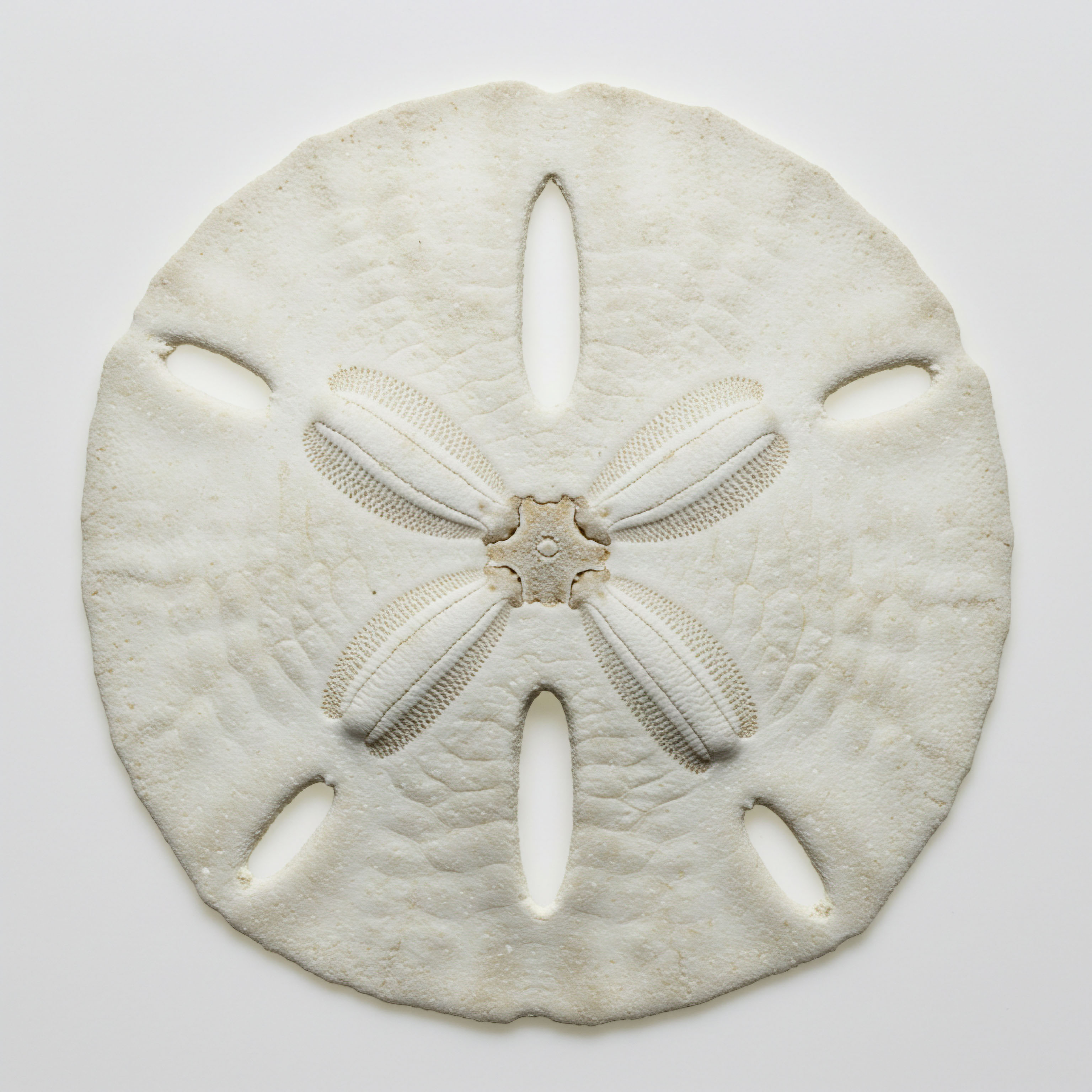

Fundamentals
The sensation of being consistently too cold or perpetually warm is a deeply personal experience. It dictates the layers you wear, the setting on your thermostat, and your comfort in your own skin. This internal climate is a direct report from the front lines of your body’s regulatory systems. Your perception of temperature is a vital piece of biological information, a continuous signal that speaks to the operational status of your core metabolic machinery.
Understanding this signal is the first step toward understanding your own physiology on a more profound level. It is an invitation to look inward, to see your body as a highly responsive, interconnected system that is constantly communicating its needs and its state of balance.
At the very center of this intricate management is a small, yet powerful, region of the brain called the hypothalamus. This structure functions as the master control unit for homeostasis, the state of steady internal, physical, and chemical conditions maintained by living systems. The hypothalamus acts like a sophisticated command center, receiving a constant stream of data from every corner of your body. It monitors blood temperature, nutrient levels, and, critically, the concentration of various signaling molecules.
Based on this influx of information, it makes continuous, fine-tuned adjustments to maintain your body within a very narrow optimal operating range. One of its most critical responsibilities is thermal homeostasis, the process of keeping your core body temperature stable, around 98.6°F (37°C), regardless of the external environment.
Your internal sense of temperature is a primary indicator of your metabolic and endocrine system’s functional harmony.
To execute its directives, the hypothalamus relies on a specialized class of chemical messengers known as peptides and hormones. These molecules are the language of your body’s internal communication network. They are released into the bloodstream and travel to distant cells and tissues, carrying specific instructions. Peptides are short chains of amino acids, the fundamental building blocks of proteins.
Their small size and specific shapes allow them to act as highly precise keys, fitting into molecular locks, or receptors, on the surface of cells. This binding action initiates a cascade of events inside the cell, effectively translating a chemical message into a biological action. This action could be to increase cellular activity, slow it down, produce a new protein, or, in the context of thermoregulation, generate more heat.

The Body’s Communication Network
This entire system operates through a series of elegant feedback loops. Think of it as a highly advanced smart home system. The hypothalamus sets the desired temperature. Hormones and peptides are the signals sent out to the body’s “HVAC” units—your muscles, fat cells, and organs.
These units then report back on their activity and the resulting temperature change. For instance, if the hypothalamus detects that your core temperature is dropping, it can release Thyrotropin-Releasing Hormone (TRH). This peptide travels a short distance to the pituitary gland, instructing it to release Thyroid-Stimulating Hormone (TSH). TSH then travels to the thyroid gland in your neck, telling it to produce thyroid hormones (T3 and T4).
These thyroid hormones are the final messengers that travel throughout thebody, increasing the metabolic rate Meaning ∞ Metabolic rate quantifies the total energy expended by an organism over a specific timeframe, representing the aggregate of all biochemical reactions vital for sustaining life. of nearly every cell. This increase in cellular metabolism is an energy-intensive process that generates heat as a byproduct, warming you from the inside out. This entire sequence is a beautiful example of a biological axis, in this case, the Hypothalamic-Pituitary-Thyroid (HPT) axis, working in concert to maintain your thermal stability.
When this communication system is functioning optimally, you feel comfortable. Your body adapts seamlessly to changes in the environment, shivering to generate heat when you step into the cold and sweating to release it when you exercise. You possess a resilience to thermal stress. A disruption in this communication, however, can lead to a persistent feeling of being too hot or too cold.
This could be due to a decrease in the production of key peptides, a reduction in the sensitivity of cellular receptors, or an imbalance in the feedback signals returning to the hypothalamus. These are not mere feelings of discomfort; they are symptoms of a deeper systemic dysregulation. They indicate that the conversation between your brain and your body has become muted, distorted, or inefficient. Peptide therapy, in this context, is a clinical strategy designed to restore the clarity and precision of these essential biological conversations, helping to recalibrate the system and re-establish its intended balance.


Intermediate
As we move from a foundational understanding of thermal homeostasis to the clinical application of peptide therapies, we begin to examine the specific mechanisms by which these interventions can influence the body’s internal thermostat. The protocols used in a clinical setting are designed to interact with precise points within the body’s endocrine and metabolic architecture. The goal is to re-establish a more youthful and efficient signaling environment.
This involves using bioidentical peptides, molecules that are identical to those the body naturally produces, to supplement, stimulate, or modulate the body’s own communication pathways. These therapies are predicated on the principle of restoring function, supplying the specific messengers the system may be lacking to perform its regulatory duties effectively.
Two primary areas where peptide therapies Meaning ∞ Peptide therapies involve the administration of specific amino acid chains, known as peptides, to modulate physiological functions and address various health conditions. exert a significant influence on thermal homeostasis are through the modulation of the growth hormone axis and the optimization of sex hormones. Both pathways are deeply intertwined with the body’s basal metabolic rate Meaning ∞ The Basal Metabolic Rate (BMR) defines the minimum caloric expenditure required to sustain vital physiological functions at rest, encompassing processes such as respiration, circulation, cellular repair, and maintaining body temperature. (BMR), which is the largest component of your daily energy expenditure and a primary source of body heat. A change in BMR directly translates to a change in your baseline heat production, affecting your overall thermal sensation.

Growth Hormone Peptides and Metabolic Rate
The growth hormone Meaning ∞ Growth hormone, or somatotropin, is a peptide hormone synthesized by the anterior pituitary gland, essential for stimulating cellular reproduction, regeneration, and somatic growth. (GH) axis is a central regulator of metabolism, body composition, and cellular repair. As we age, the pulsatile release of growth hormone from the pituitary gland Meaning ∞ The Pituitary Gland is a small, pea-sized endocrine gland situated at the base of the brain, precisely within a bony structure called the sella turcica. naturally declines. This decline is associated with a host of metabolic changes, including a decrease in lean muscle mass, an increase in adipose tissue (body fat), and a general slowing of the metabolic rate.
This metabolic slowdown directly impacts thermoregulation, as a lower BMR means less heat is being generated at rest. This can contribute to feelings of cold intolerance and a general sense of sluggishness.
Growth hormone releasing hormone (GHRH) analogues and ghrelin mimetics are two classes of peptides used to stimulate the body’s own production of GH. They work by interacting with the hypothalamus and pituitary gland to restore a more youthful pattern of GH release.
- Sermorelin ∞ This peptide is a GHRH analogue. It works by binding to GHRH receptors in the pituitary gland, directly stimulating the production and release of endogenous growth hormone. Its action is dependent on a functioning pituitary gland and is governed by the body’s natural feedback loops, specifically the inhibitory signal from somatostatin.
- CJC-1295 ∞ This is a longer-acting GHRH analogue. It provides a more sustained elevation of GH and IGF-1 levels. When used in combination with a ghrelin mimetic like Ipamorelin, the synergistic effect produces a strong, clean pulse of GH release that mimics the body’s natural patterns.
- Ipamorelin and Hexarelin ∞ These peptides are known as growth hormone secretagogues (GHS) or ghrelin mimetics. They work on a separate receptor in the hypothalamus and pituitary (the GHSR receptor) to stimulate GH release. They also have the secondary effect of suppressing somatostatin, the hormone that inhibits GH release. This dual action makes them very effective at increasing GH levels.
- Tesamorelin ∞ A potent GHRH analogue, Tesamorelin has been specifically studied for its effects on visceral adipose tissue (VAT). By increasing GH and subsequently IGF-1, it enhances lipolysis (the breakdown of fats) and can improve overall metabolic health, which contributes to a more efficient thermoregulatory system.
The long-term effect of these therapies on thermal homeostasis is directly tied to their impact on body composition Meaning ∞ Body composition refers to the proportional distribution of the primary constituents that make up the human body, specifically distinguishing between fat mass and fat-free mass, which includes muscle, bone, and water. and metabolic rate. By stimulating GH production, these peptides can lead to an increase in lean muscle mass. Muscle tissue is significantly more metabolically active than fat tissue, meaning it burns more calories at rest and generates more heat.
A sustained increase in lean body mass Meaning ∞ Lean Body Mass (LBM) represents total body weight excluding all fat. over months or years of therapy can effectively raise the body’s “idling speed,” leading to a higher BMR and an improved sense of warmth and energy. This is a fundamental recalibration of the body’s metabolic engine.
Peptide protocols are designed to interact with specific endocrine pathways to restore the body’s inherent capacity for metabolic and thermal regulation.

How Do Hormonal Optimization Protocols Influence Body Temperature?
The optimization of sex hormones, particularly testosterone in both men and women, is another cornerstone of metabolic and thermal regulation. Testosterone has profound effects on muscle mass, metabolic rate, and even the function of the thyroid gland. Low testosterone levels are frequently associated with symptoms of fatigue, weight gain, and cold intolerance, all pointing to a downregulated metabolic state.
Hormonal optimization protocols for men often involve weekly injections of Testosterone Cypionate, sometimes paired with agents like Gonadorelin to maintain the body’s own signaling pathways. For women, lower doses of testosterone, often combined with progesterone, can be used to address symptoms related to perimenopause and post-menopause, including thermal disturbances like hot flashes and night sweats.
The mechanism here is twofold. First, like growth hormone, testosterone is anabolic; it promotes the growth of muscle tissue, thereby increasing the basal metabolic rate and baseline heat production. Second, testosterone interacts with the thyroid axis. It appears to support the conversion of the less active thyroid hormone (T4) into the more active form (T3) in peripheral tissues.
Optimal T3 levels are essential for maintaining a robust metabolic rate. Therefore, long-term testosterone optimization Meaning ∞ Testosterone Optimization refers to the clinical strategy of adjusting an individual’s endogenous or exogenous testosterone levels to achieve a state where they experience optimal symptomatic benefit and physiological function, extending beyond merely restoring levels to a statistical reference range. can lead to a more efficient thyroid function and a more stable thermal environment. For women experiencing the intense heat of hot flashes, the restoration of hormonal balance, including appropriate levels of testosterone and progesterone, can help stabilize the hypothalamic set point, reducing the frequency and severity of these thermoregulatory storms.
| Peptide Class | Primary Mechanism | Effect on Body Composition | Influence on Thermal Homeostasis |
|---|---|---|---|
| GHRH Analogues (e.g. Sermorelin, CJC-1295) | Stimulates pituitary to release GH | Increases lean muscle mass, decreases fat mass | Increases basal metabolic rate, leading to higher baseline heat production. |
| Ghrelin Mimetics (e.g. Ipamorelin, Hexarelin) | Stimulates GH release and suppresses somatostatin | Promotes lean mass gain | Enhances GH pulse, contributing to improved metabolic efficiency and heat generation. |
| Tesamorelin | Potent GHRH analogue | Specifically reduces visceral adipose tissue | Improves insulin sensitivity and metabolic health, supporting more stable thermoregulation. |
The long-term application of these peptide and hormonal therapies represents a systematic approach to recalibrating the body’s core metabolic and endocrine systems. By addressing the age-related decline in key signaling molecules, these protocols aim to restore the physiological environment to a state of higher efficiency. The resulting improvements in thermal homeostasis—feeling warmer if you were always cold, or experiencing fewer hot flashes if you were prone to them—are direct consequences of this systemic enhancement. It is a shift from a state of metabolic sluggishness and signaling confusion to one of metabolic efficiency Meaning ∞ Metabolic Efficiency refers to the body’s capacity to optimize energy utilization from macronutrients, minimizing waste and maximizing ATP production for various physiological processes. and clear communication.
Academic
A sophisticated examination of the long-term effects of peptide therapy Meaning ∞ Peptide therapy involves the therapeutic administration of specific amino acid chains, known as peptides, to modulate various physiological functions. on thermal homeostasis requires a deep dive into the molecular and cellular mechanisms governing energy expenditure. While systemic effects like increased basal metabolic rate are clinically observable, the underlying biology involves a complex interplay between central neural circuits in the hypothalamus and peripheral tissue activity, particularly within specialized adipose depots. The most compelling area of current research focuses on how certain peptides, specifically growth hormone secretagogues, modulate non-shivering thermogenesis Meaning ∞ Non-shivering thermogenesis refers to the body’s physiological process of generating heat through metabolic activity, specifically without involving skeletal muscle contraction or shivering. (NST) through the activation of brown adipose tissue (BAT) and the browning of white adipose tissue (WAT). This pathway represents a primary mechanism by which the body can uncouple fuel oxidation from ATP synthesis to dissipate energy directly as heat, a process with profound implications for long-term metabolic health.

The Central Role of Brown Adipose Tissue in Thermogenesis
Brown adipose tissue Meaning ∞ Adipose tissue represents a specialized form of connective tissue, primarily composed of adipocytes, which are cells designed for efficient energy storage in the form of triglycerides. is a specialized thermogenic organ, densely packed with mitochondria that express a unique protein called Uncoupling Protein 1 Meaning ∞ UCP1, Uncoupling Protein 1, is a mitochondrial inner membrane protein in brown adipose tissue. (UCP1). When activated, UCP1 inserts itself into the inner mitochondrial membrane and creates a proton leak, allowing protons to flow back into the mitochondrial matrix, bypassing ATP synthase. This process uncouples the electron transport chain from ATP production, causing the energy generated from the oxidation of fatty acids and glucose to be released directly as heat. This is a highly efficient mechanism for rapid heat production, critical for maintaining core body temperature in response to cold exposure.
In adults, BAT was once thought to be metabolically insignificant. However, advanced imaging techniques have revealed the presence of substantial and activatable BAT depots, primarily in the supraclavicular and paravertebral regions. The activity of this tissue is inversely correlated with body mass index (BMI) and glucose levels, indicating its important role in systemic metabolic regulation. The long-term objective of certain peptide therapies can be viewed as an effort to enhance the mass and activity of this thermogenic tissue.

How Do Peptides Mediate Brown Adipose Tissue Activation?
The activation of BAT is controlled by the sympathetic nervous system (SNS). Neurons originating in the hypothalamus release norepinephrine in the vicinity of brown adipocytes. This norepinephrine binds to β3-adrenergic receptors on the cell surface, initiating a signaling cascade that leads to increased lipolysis, fatty acid oxidation, and, most importantly, the transcriptional upregulation of the UCP1 gene.
Growth hormone and its downstream mediator, Insulin-like Growth Factor 1 (IGF-1), are key modulators of this process. Peptide therapies that stimulate the GH/IGF-1 axis, such as those using Tesamorelin Meaning ∞ Tesamorelin is a synthetic peptide analog of Growth Hormone-Releasing Hormone (GHRH). or combinations like CJC-1295 and Ipamorelin, can therefore exert a powerful, long-term influence on BAT-mediated thermogenesis.
The mechanism is multifaceted. GH has been shown to increase the expression of β3-adrenergic receptors on adipocytes, making them more sensitive to sympathetic stimulation. Furthermore, both GH and IGF-1 promote the differentiation of brown pre-adipocytes into mature, UCP1-expressing brown fat cells. They also stimulate the “browning” or “beiging” of white adipose tissue, a process where pockets of UCP1-expressing cells, known as beige or brite adipocytes, develop within white fat depots.
This transformation effectively increases the body’s total thermogenic capacity. Long-term, consistent elevation of the GH/IGF-1 axis through peptide therapy can lead to a significant expansion and enhancement of this thermogenic machinery, resulting in a sustained increase in energy expenditure Meaning ∞ Energy expenditure represents the total caloric output of the body, quantifying the sum of energy consumed to sustain vital physiological processes, engage in physical activity, and process ingested nutrients over a given period. and heat production.
| Step | Biological Event | Key Molecules | Outcome |
|---|---|---|---|
| 1. Peptide Administration | A GHRH analogue (e.g. Tesamorelin) is administered. | Tesamorelin, CJC-1295 | Peptide enters circulation. |
| 2. Pituitary Stimulation | Peptide binds to GHRH receptors on somatotrophs in the anterior pituitary. | GHRH-R | Stimulates synthesis and pulsatile release of Growth Hormone (GH). |
| 3. Systemic GH Action | GH circulates and acts on target tissues, including the liver. | GH, IGF-1 | Liver produces IGF-1; GH and IGF-1 circulate systemically. |
| 4. Adipose Tissue Sensitization | GH increases the expression of β3-adrenergic receptors on adipocytes. | β3-AR | Brown and white adipocytes become more responsive to norepinephrine. |
| 5. Upregulation of UCP1 | GH/IGF-1 signaling promotes the transcription of the UCP1 gene. | UCP1 mRNA, PGC-1α | Increased synthesis of Uncoupling Protein 1. |
| 6. Enhanced Thermogenesis | Upon sympathetic stimulation, UCP1 is activated in mitochondria. | Norepinephrine, UCP1 | Energy from fatty acid oxidation is dissipated as heat, increasing core temperature. |

Central Regulation and Neuropeptide Interactions
The long-term effects of peptide therapy on thermal homeostasis are also governed by their interactions within the central nervous system. The arcuate nucleus of the hypothalamus contains two key populations of neurons that control both energy balance and temperature ∞ the pro-opiomelanocortin (POMC) neurons and the neuropeptide Y/agouti-related peptide (NPY/AgRP) neurons. POMC neurons are anorexigenic (they decrease appetite) and promote energy expenditure and heat production. NPY/AgRP neurons are orexigenic (they increase appetite) and promote energy conservation by decreasing thermogenesis.
Peptides used in therapy can influence the activity of these competing circuits. For example, ghrelin (which is mimicked by peptides like Ipamorelin) is known to activate NPY/AgRP neurons, which would typically suppress thermogenesis. However, the primary therapeutic effect of Ipamorelin is the potent stimulation of GH, whose downstream effects on peripheral tissues (like BAT activation) and other central pathways ultimately lead to a net increase in energy expenditure. This highlights the complexity of the system; the ultimate thermic effect of a peptide is the integrated result of its actions on multiple central and peripheral targets.
Furthermore, hormones like leptin (released from fat cells) and insulin provide feedback to these hypothalamic circuits. By improving body composition and insulin sensitivity over the long term, peptide therapies can fundamentally alter the baseline signaling environment of the hypothalamus, favoring the activity of POMC pathways and leading to a sustained elevation in thermogenic tone.
This deep dive reveals that the long-term impact of peptide therapy on thermal regulation is a sophisticated biological process. It involves the recruitment and activation of specialized thermogenic tissues like BAT, a process driven by the enhanced sensitivity and signaling of the GH/IGF-1 axis. This peripheral activity is orchestrated by central control centers in the hypothalamus, which are themselves being modulated by the peptides and the improved metabolic environment they help create. The result is a durable recalibration of the body’s energy expenditure, leading to a more robust and stable thermal homeostasis.
References
- S-W, Kim, and K-H, Kim. “The role of peptides in the regulation of energy balance and thermoregulation.” Journal of Endocrinology, vol. 232, no. 1, 2017, pp. R1-R15.
- Yehuda, S. and A. J. Kastin. “Peptides and thermoregulation.” Neuroscience & Biobehavioral Reviews, vol. 4, no. 4, 1980, pp. 459-71.
- Berry, D. C. & Stenesen, D. “Growth hormone, insulin and nutrient signals in the regulation of brown and beige fat development and function.” The Journal of Endocrinology, vol. 251, no. 1, 2021, pp. R1-R17.
- Clemmons, David R. “Metabolic Actions of IGF-I in Normal Physiology and Disease.” Endocrinology and Metabolism Clinics of North America, vol. 41, no. 2, 2012, pp. 425-43.
- Leitner, B. et al. “GHRH and ghrelin signalling in the pituitary ∞ a new model for the regulation of pulsatile GH secretion.” Journal of Neuroendocrinology, vol. 28, no. 10, 2016.
- Stanley, T. L. and S. K. Grinspoon. “Effects of growth hormone-releasing hormone on visceral and subcutaneous fat, lean body mass, and insulin resistance in adults with abdominal obesity ∞ a randomized, controlled trial.” JAMA, vol. 313, no. 11, 2015, pp. 1124-34.
- Cannon, B. & Nedergaard, J. “Brown adipose tissue ∞ function and physiological significance.” Physiological reviews, vol. 84, no. 1, 2004, pp. 277-359.
- Ho, K. K. Y. et al. “The role of testosterone in the maintenance of lean body mass in men.” The Journal of Clinical Endocrinology & Metabolism, vol. 84, no. 5, 1999, pp. 1874-77.
Reflection
The information presented here provides a map of the intricate biological pathways that govern your internal climate. This knowledge serves as a powerful tool, shifting the perception of symptoms from sources of frustration to valuable pieces of data. Your personal experience of warmth or cold is a direct reflection of a deep, systemic conversation happening within your body at every moment. Contemplating this connection is the first step on a more intentional health path.
The journey toward optimal function begins with listening to these signals and seeking to understand the language in which your body speaks. What is your physiology communicating to you right now, and how can that information guide your next steps toward reclaiming your vitality?







